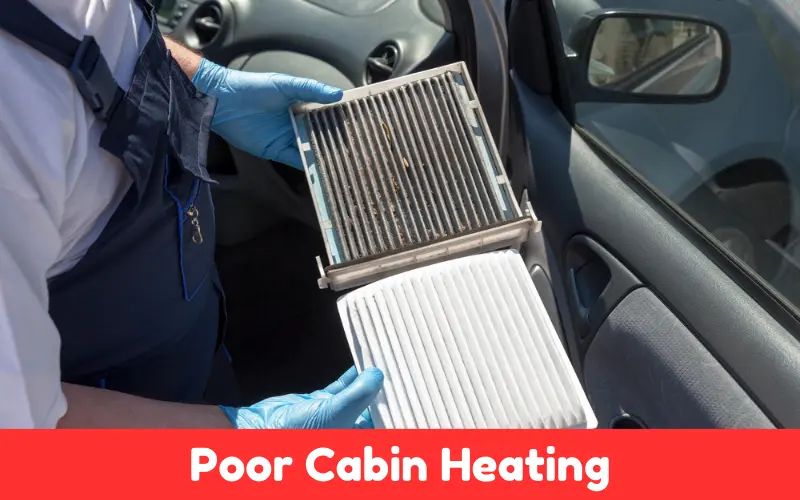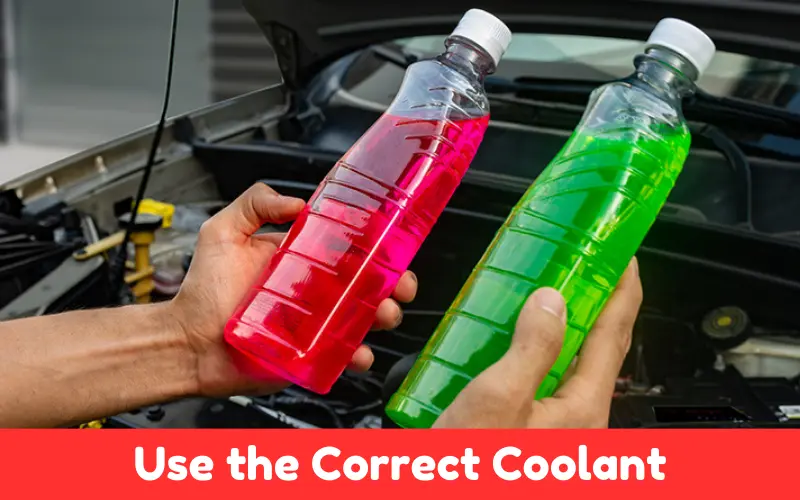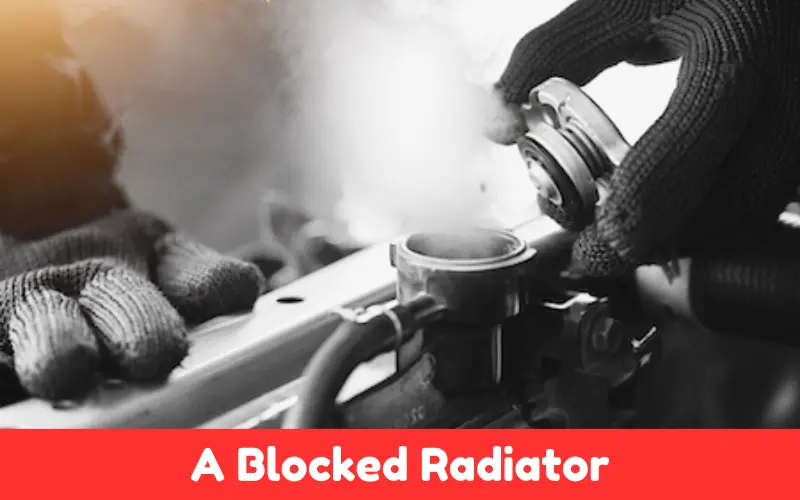A blocked radiator will affect your vehicle, and the longer you ignore it, the more it will cost to get you back on the road.
The sooner you recognize these symptoms, the easier it will be to keep your car in good shape and, therefore, keep yourself safe.
Here are some of the common symptoms of a blocked radiator. Knowing these will help you maintain your car.
Article Summary
Symptoms of A Blocked Radiator
A properly working radiator is the key to keeping your engine at the right temperature and avoiding overheating. That’s why a blocked radiator can have such serious consequences.
A blocked radiator can lead to overheating, boiling your radiator’s liquid, and even causing severe damage to your vehicle’s engine. The following are common symptoms of a blocked radiator:
1. Overheating Engine
If your radiator is clogged, one of the first symptoms is an overheating engine. Without proper airflow, your radiator can’t force heat out of your coolant, which will increase your engine temperature.
Check your dashboard for your temperature gauge heading towards the red zone or for warning lights that indicate overheating.
2. Coolant Leaks
If the radiator is blocked, the cooling system might pressurize and leak. You might notice puddles of coolant under your car or less fluid in the reservoir.
There might also be a sweet smell coming from the engine bay from sweet smelling coolant exiting the radiator (if the picture is not obscured by water, that is).
3. Discolored or Sludgy Coolant
Check the coolant’s color and consistency. It might turn rusty, brown, or even sludgy, which suggests contamination and blockage in the radiator. A healthy coolant must be bright, orange, or pink, depending on your car’s make and model.
4. Poor Cabin Heating
If your car’s radiator is blocked, it can affect the operation of its heater.

If the cabin heater is producing less heat than it used to, it could be due to a lack of coolant flowing through the heater core, which is mounted in the radiator.
5. Frequent Need for Coolant Top-Up
If you find your coolant levels to be constantly topped up, there is a good chance there is a blockage in your radiator that could result in the coolant boiling off because of very high temperatures and the rest being lost through leaks elsewhere.
6. Visible Debris and Corrosion
Sometimes, you’ll see evidence on the outside of your radiator, like bits of debris, dirt or corrosion that have become trapped in the radiator fins themselves.
Sometimes, you can see actual scale or rust that has formed in the radiator tubes themselves.
7. Steam from the Engine Bay
If it’s plugged up really badly, you may end up with steam pouring through the hood because the engine is overheating to the point where the coolant has turned to steam.
If you see steam coming from your radiator, you’d better pull over and figure out what’s going on before your engine is ruined.
How To Address A Blocked Radiator
If you suspect your radiator is blocked, it’s essential to take action promptly:
Professional Inspection and Cleaning: Have a mechanic check your cooling system. A coolant flush with fresh coolant can help to eliminate blockages and no flow areas.
Radiator Replacement: In extreme cases, the radiator will need to be replaced.
Preventive Maintenance: Inspect your system at a regular maintenance interval to maintain coolant levels and prevent blockage in the system.
What Happens If the Radiator is Blocked?
If your radiator is blocked, it can quickly lead to a whole chain of issues that will affect your engine’s efficiency and lifetime.
The radiator’s role is to remove heat from your engine and cool it down by passing the coolant over the cooling fins.
As coolant flows through the radiator, it dumps most of the heat that would usually be in contact with the pistons, rods, and valves. The cooled fluid then runs back to the block.
At first, you might see the temperature gauge rise or warning lights on your dashboard come on before anything else.
Once your engine overheats, parts expand and warp, and your head gasket will likely fail, which is an expensive and complex repair. In the worst case scenario, the engine could seize up altogether, rendering it irreparable.
Furthermore, a plugged radiator can cause the coolant to boil or overflow in its expansion tank, creating leaks and reducing the coolant level overall.
A blocked radiator can lead to inefficiency in cooling and exaggerate overheating problems.

When your cooling system has a blocked radiator, driving continually on it severely stresses both the engine and the cooling system, which tends to wear out much quicker than usual.
Coolant flushes with a radiator inspection are recommended on a regular basis in order to avoid these problems.
Get your radiator inspected ASAP if you suspect it might be blocked. This is a preventive measure you should take so your engine doesn’t fail while you’re driving.
That’s the worst case scenario you can imagine that suffering a blown motor due to a blocked radiator.
Finally, you may have an engine that runs cold because the heater core which relies on hot coolant from the radiator and it won’t work properly if the flow is restricted.
How To Fix A Blocked Radiator
A blocked radiator can hamper the engine badly. So, you should not ignore the problem.
Here are the warning signs to look out for, as well as the steps you should take to fix a blocked radiator and keep your radiator and your cooling system in good working order.
1. The engine overheats. Search for visible leaks and check the radiator’s condition 2. The engine coolant runs low 3. Strange odor coming from under the hood 4. Strange noises coming from the engine.
Regular Coolant Flushes
To ensure a clean and efficient radiator, it’s also important to periodically do a coolant flush. As time goes by, your coolant gets filled with rust, scale, and sludge.
And it has to be changed. Every 30,000 to 50,000 miles should do it most of the time.
Coolant flushes is another one of those jobs you want to do every month, every year, and then you forget for about five years.
But it comes time when you have to put the big hoses on the sides of the radiator and pour in the new coolant.
It’s really not so bad unless you live in an area where the driveway has a tilting error, and then you’ll have five or six gallons of coolant running down the hill.
Use the Correct Coolant
Ensure you are using the right type of coolant for your vehicle. vehicles require different types of coolant, and using the wrong one can cause chemical reactions. Examine your owner’s manual and use the right one.

Further, avoid using tap water to mix the coolant with it as tap water contains minerals and can cause deposits in the radiator paste.
A slip of the tongue can lead to a world of trouble, but a wool blunder can have disastrous effects.
Regular Inspections and Maintenance
Taking a look at your radiator and checking the rest of the cooling system on a regular basis will alert you to problems before they spiral out of control.
Check the area around the radiator fins for evidence of corrosion and leaks, look for debris, and make sure the radiator cap fits properly with an intact seal.
In general, cooling system maintenance should consist of a periodic look at the health of the radiator and the rest of the cooling system by your mechanic.
Fixing small leaks or cracked hoses can prevent bigger problems from occurring and maintain the integrity of your cooling system, as well as prevent buildup in the radiator that can ultimately lead to impaired cooling.
If you take these preventative steps, you’ll remove the risk of suffering the expensive and unpleasant problems that could result from a blocked radiator.
FAQs on Symptoms of A Blocked Radiator
What causes A Radiator To Become Blocked?
A buildup of sludge from debris, rust, and mineral deposits can block radiators. Poor maintenance, such as changing coolant infrequently, can also lead to blockages. Using the wrong kind of coolant or water contaminated with oil, grease, dirt, or scale can also cause the radiator to form scale and sludge.
How Can I Prevent My Radiator from Becoming Blocked?
Regular maintenance keeps radiators free of blockages. Weekly coolant level checks with a glance at the coolant overflow tube under the bonnet, regular coolant flushes, verified that the right type of coolant is used, and that any radiator and cooling system leaks have been properly addressed. From time to time, a particularly squeaky motor might attract your attention, so checking and replacing the coolant every so often, as per your particular motor’s manufacturer’s recommendations, is pretty vital.
Can I Drive My Car If the Radiator is Blocked?
Driving with a blocked radiator as it works to cool the engine is a bad idea, though. Overheating will severely damage the engine. If you think your radiator may be blocked, have your vehicle checked out by a mechanic as soon as possible.
How Do I Know If My Radiator Needs To Be Replaced?
If your radiator is deeply blocked or damaged, your mechanic might tell you the only option left is to replace it. Clues that it is time for a new radiator include stubborn overheating, frequent coolant leaks, obvious external damage, or internal corrosion or scale that can’t be removed using a coolant flush.
Conclusion
Symptoms of a blocked radiator are clear, and if you spot them early, then your vehicle shouldn’t suffer any major problems.
If you look for blockages and nip them in the bud, you can keep your engine ticking over without having to make expensive repairs in the future.

